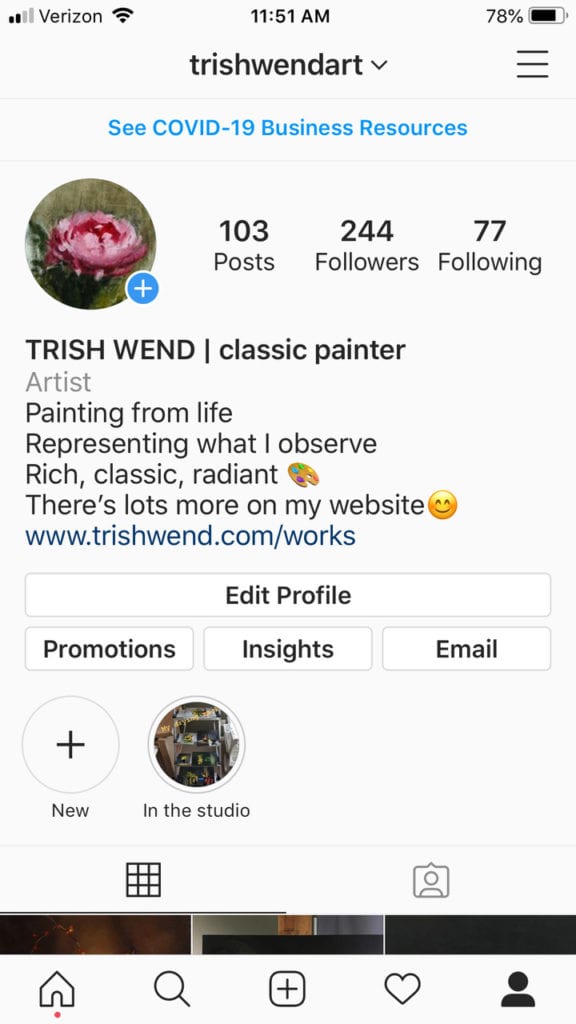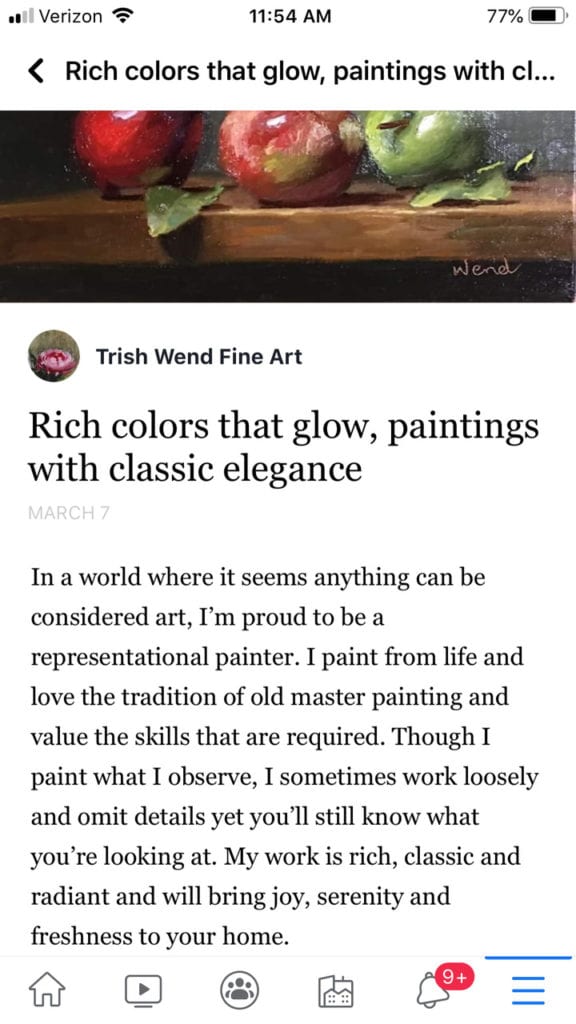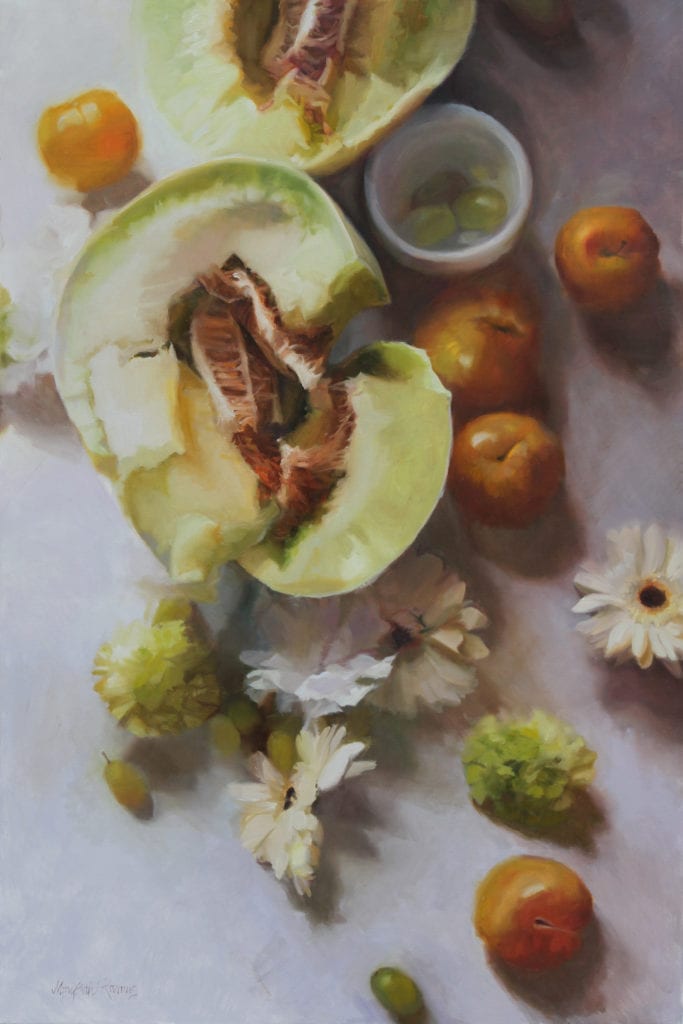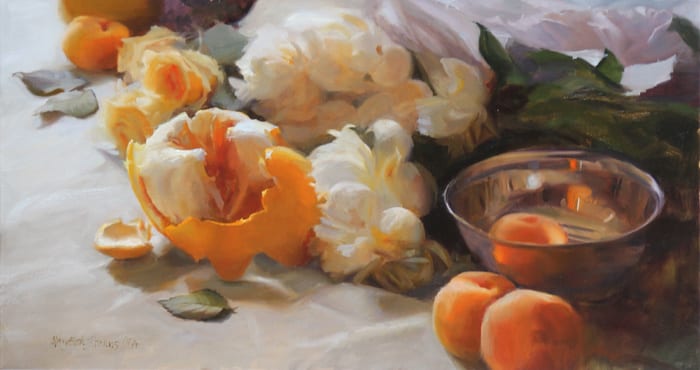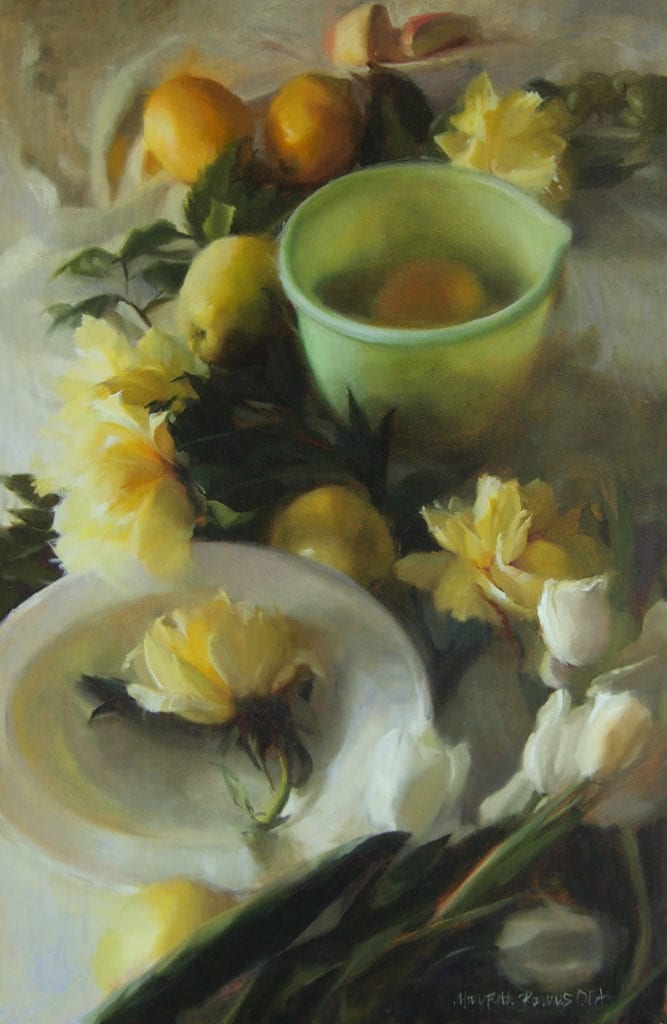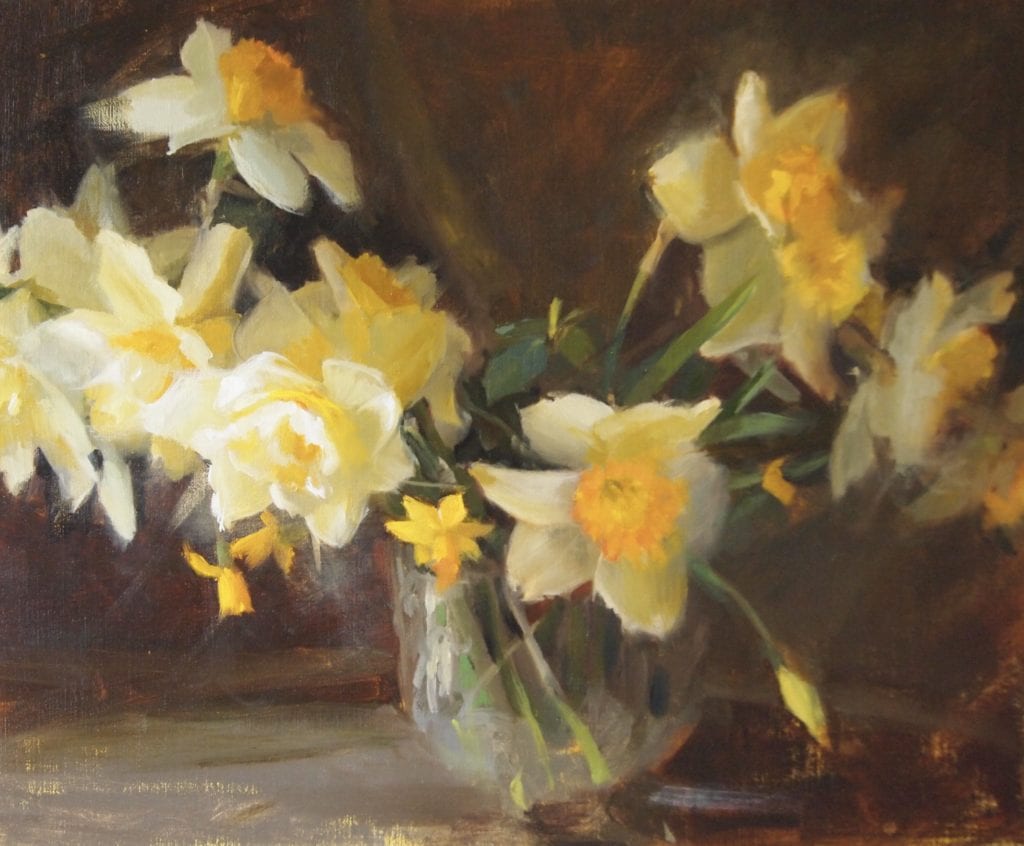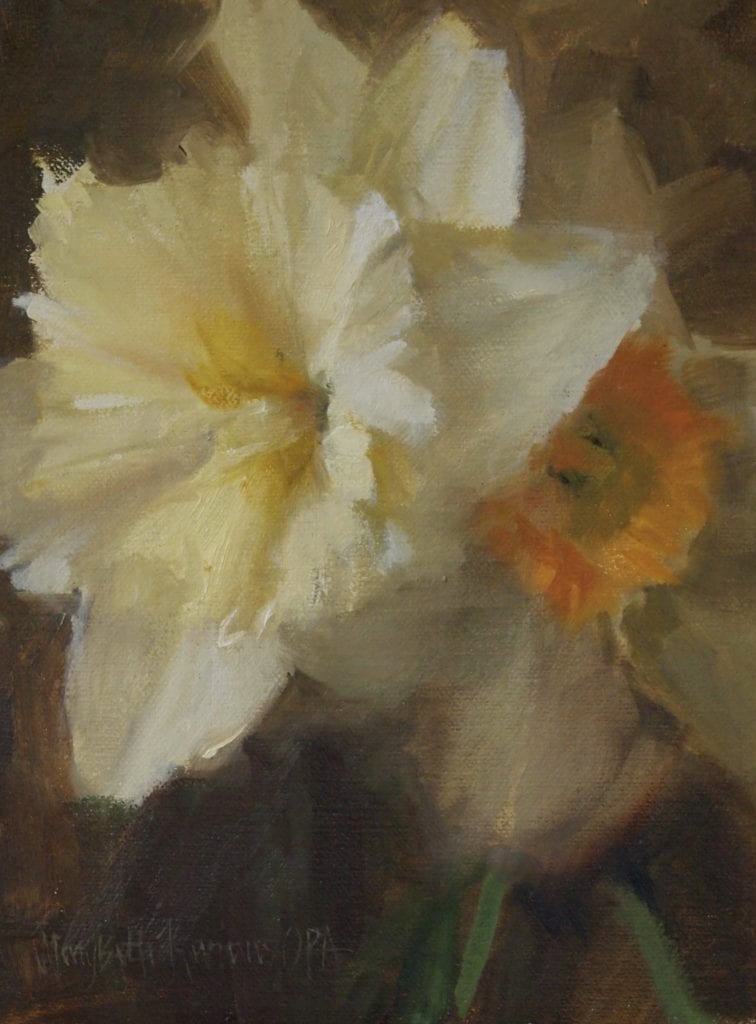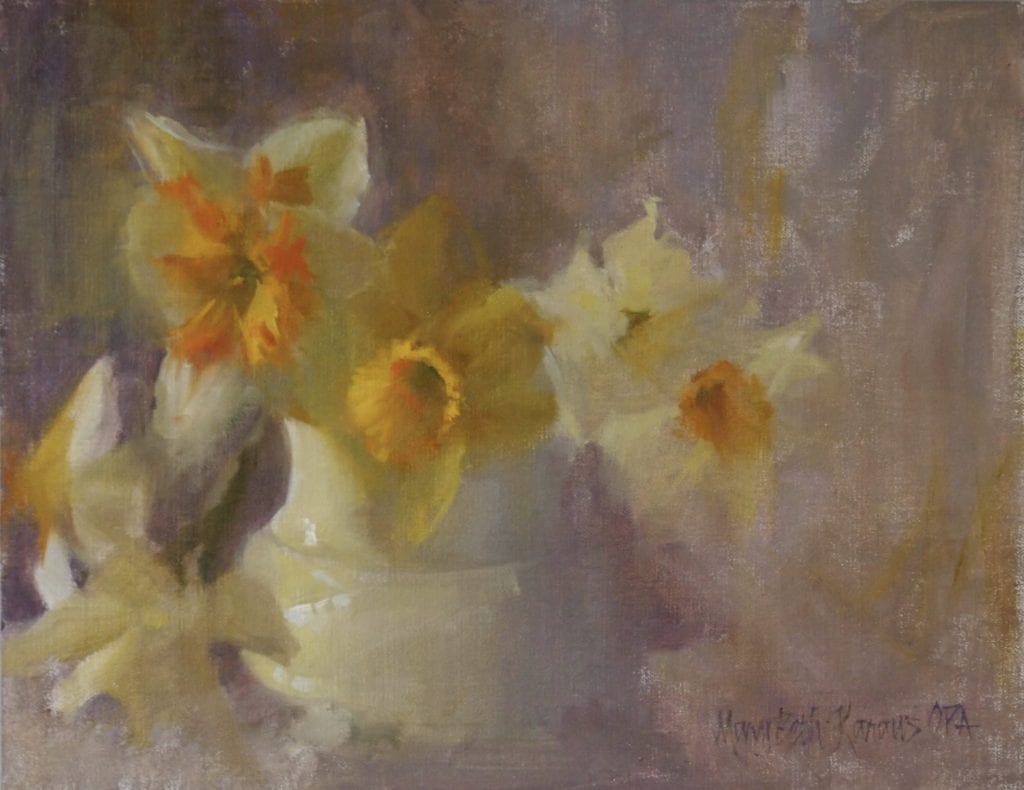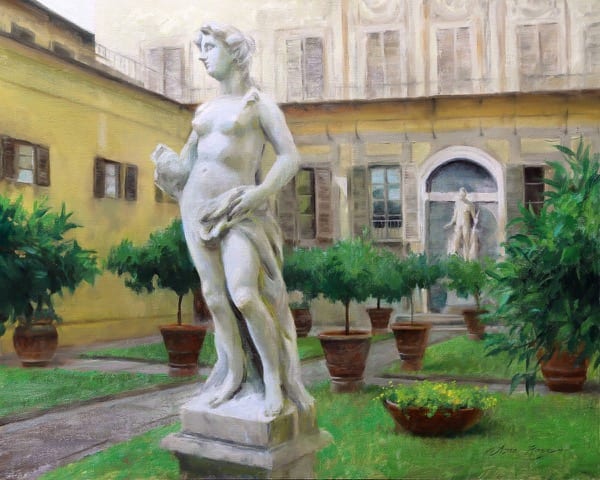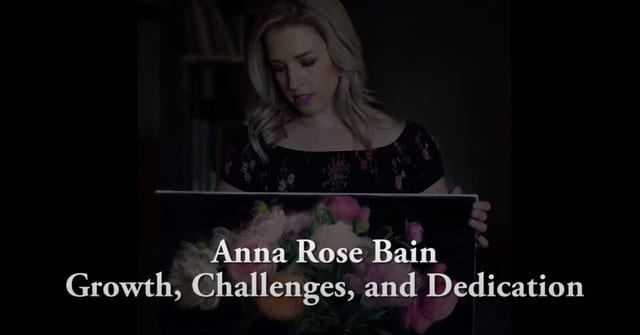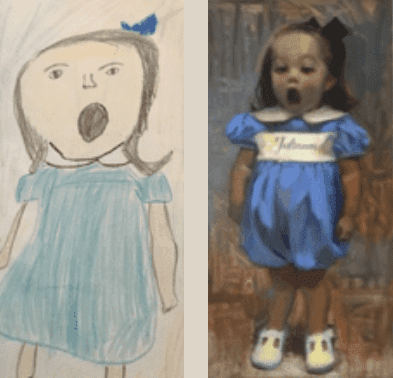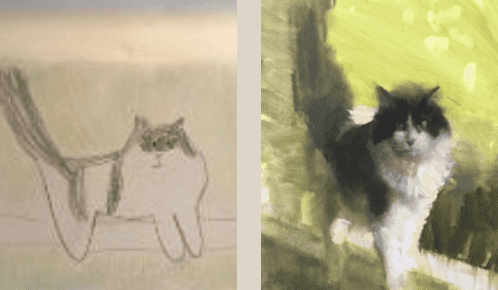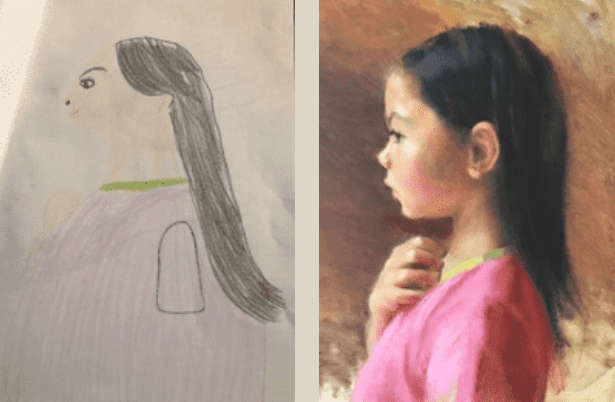Some years ago I went through a period where a recurring element not only kept re-appearing in my paintings but would re-appear in pretty much the same location. It was utterly unconscious – and a bit disturbing – a glitch in the Matrix. It felt like waking up in the movie ‘Ground Hog Day’.
I was not only disturbed by it I was deeply curious about it. The answer as to why it was happening turned out to not be rocket science. I had found something that worked and the brain loves a well-paved highway. It was a safe solution. I could get myself a guaranteed pat on the back – even if it was only me standing back thinking, ‘Hey, that’s not too bad!’
Paralyzed by Applause…
As beings, we are deeply risk-averse. Our default is to seek safety – to repeat the thing that worked. It’s a deep and understandable instinct that we want to avoid failure and criticism and seek the warm nod of approval. I call it being paralyzed by applause.
Repetition in any form can be either a conscious, powerful choice in service of a concept, or it can become the proverbial ‘highway to the danger zone’. The brilliant explorations of Monet reprising his water lilies or the kind of repetition devoid of risk and exploration that squelches the amazing creative beast prowling inside all of us.
What Scares You?
So, what can you do if you’ve become stuck on ‘rinse and repeat’? If I start defaulting to the safe zone I pose questions. I then work the problem to find an answer. For example…
What scares me? What am I avoiding?
What would happen if I used old furry brushes?
What would happen if I shoveled up the pigment instead of thinning it? What could I try that might communicate the noise and activity in a scene?
What would happen if I painted the painting upside down?
What would happen if only half the figure was in the picture plane?
What would happen if I put the center of interest in…shudder…the CENTER?
Could I make it work?
What would happen if…
And on…
The creative excitement will start seeping back and becomes its own reward.
The Good Fail…
There’s such a thing as a ‘good fail’. I walked into a gallery and saw a truly epic fail on the wall by someone who I know is normally an excellent painter. I’m pretty sure I did the “Huh???” family-dog-head-tip. My curiosity made me pause because I knew this person was normally not only a good painter but a very consistent one. I pretty quickly identified what wasn’t working in the painting and what I suspected was the cause of the fail. The painter had ventured outside of their safe zone and tried something new. They stretched. Granted, they had incorporated concepts they had not yet mastered so the painting was problematic. Though the solution had not worked, what I loved about the painting is that the painter had taken a risk. They had tried! That being said I might encourage painters to hold back from presenting those paintings publicly until the kinks are worked out. However, I suspected interesting new things would be coming down the pike from that painter once they hammered out the problems.
The Monster Mash…
If it has become a habit to circle back to an artistic solution that worked in the past we run the risk of applying it at an inappropriate time. I completely fell into my version of that low budget horror movie. I’d come up with a little formula for painting a specific type of scene that was a sure-fire way to make, not a masterpiece, but a nice little painting. It was confessedly a bit of an ‘arse’ saving move on my part at a plein air event I was nervous about.
Since I was new to the event and the location, I was feeling the pressure to produce. The tricks I’d devised were working famously and I was having that good, “I got this!” feeling going on until I slammed head-on into what was ACTUALLY in front of me the next day. The conditions had changed and literally nothing was the same. I reached into my little ‘Emergency Arse Saving Tricks’ bag and started painting like a banshee. It became clear in short order that my painting was a bit of a Frankenstein sewn together out of random parts. A few of my magic tricks, a couple of sprinkles from my formula, mixed with a few strokes of direct observation, topped off with a dash of panic. What had gone wrong? I’d mixed the past with the present. We must be present when we paint.
Go the Distance…
Many years ago I shared a subway ride with a truly great American painter that I deeply admired. We were quiet and then he turned to me and said. “Lyn, don’t ever stop looking. If you do, your paintings will eventually become cartoons.” He was not referring to ‘looking’ in the sense of slavish copying but looking in the sense of a deep and direct observation that leads to an understanding of the structure, essence, gesture, radiance of the forms around us.
I never forgot that moment and the truth of what he said has become more evident over the years. It has pulled me back from the edge when I have been tempted by the ease of drifting into painting formulas rather than asking myself to go the distance and look to see if there might be a different way to state something. Sometimes the different thing doesn’t turn out to be the better thing. Sometimes it does. Whichever way it goes I have the confidence the final solution was a decision, not a default.
Resistance is not Futile!
I’ll close with a painting that was one of my personal favorites of the year – ‘Coffee…black.’ It was the act of resisting nearly every formula I’d ever concocted or relied on in the past that fueled the intent of the painting. That intent being – paint not the objects but the sounds, smells, movement, atmosphere – the passage of the scene through time. The players themselves were only the supporting actors. I had to step away from the painting and out of the studio repeatedly to resist the urge to refine, to finish, to paint the life out of it.
So, never stop looking. Trust the painting. Trust yourself. And trust that tomorrow you can walk into your studio and it won’t be Groundhog Day!
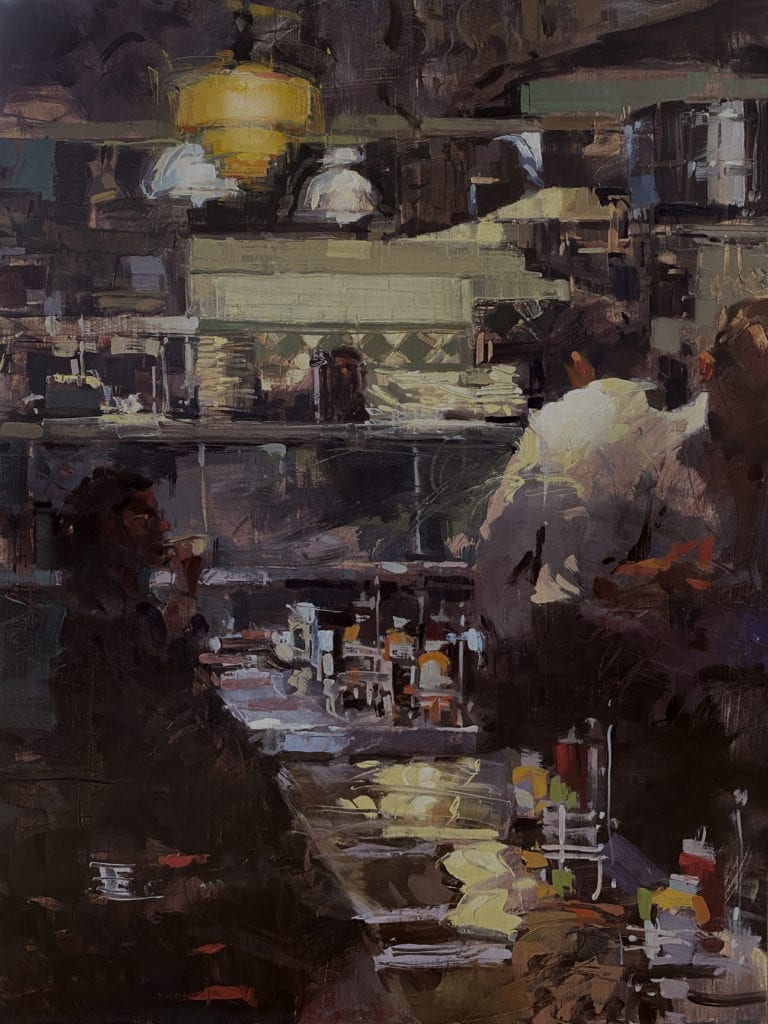
24″ x 18″ – Oil on linen
Authentique Gallery of Fine Art
